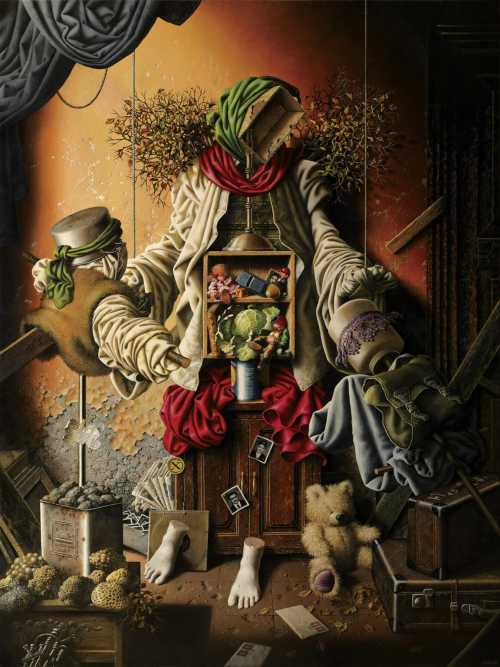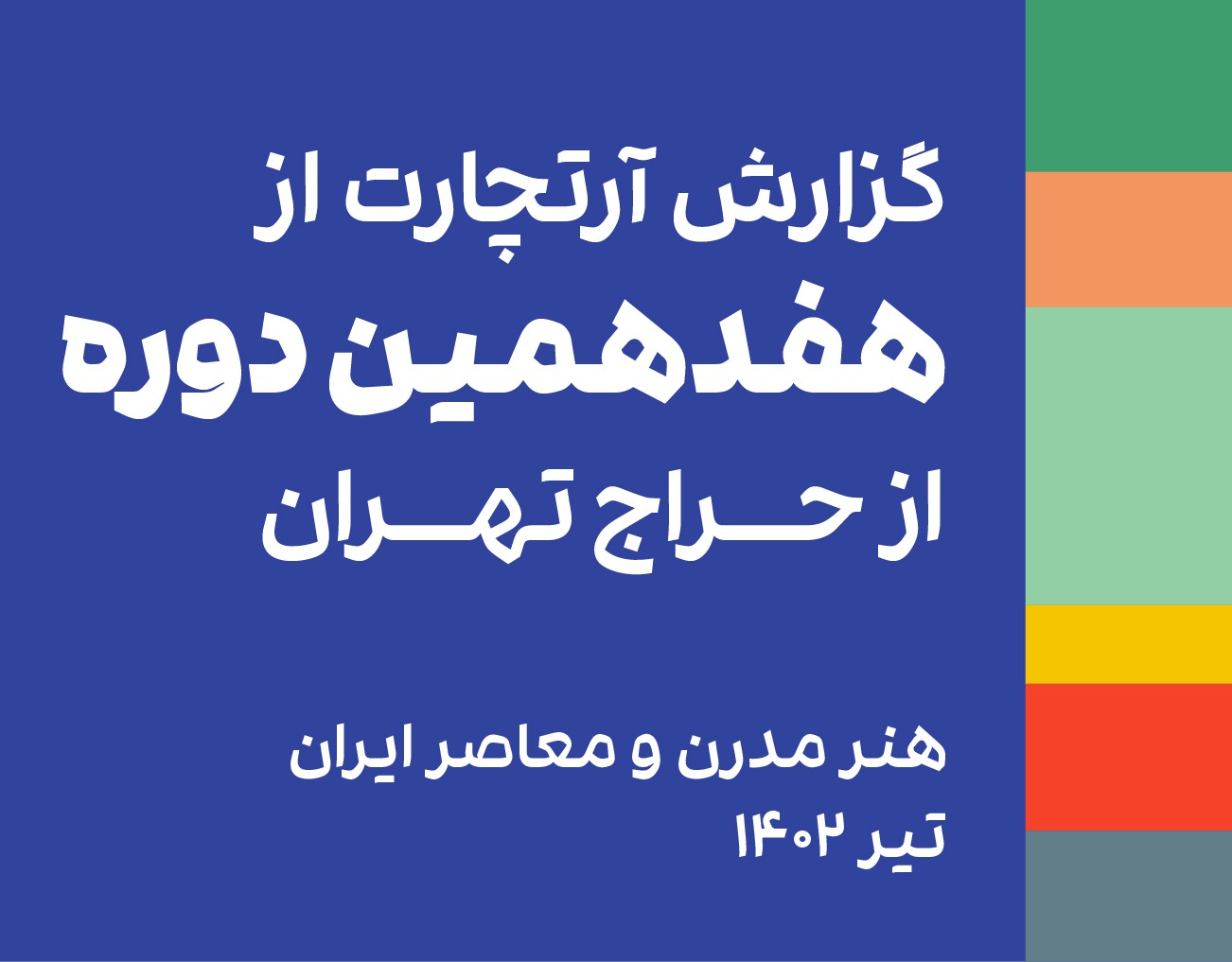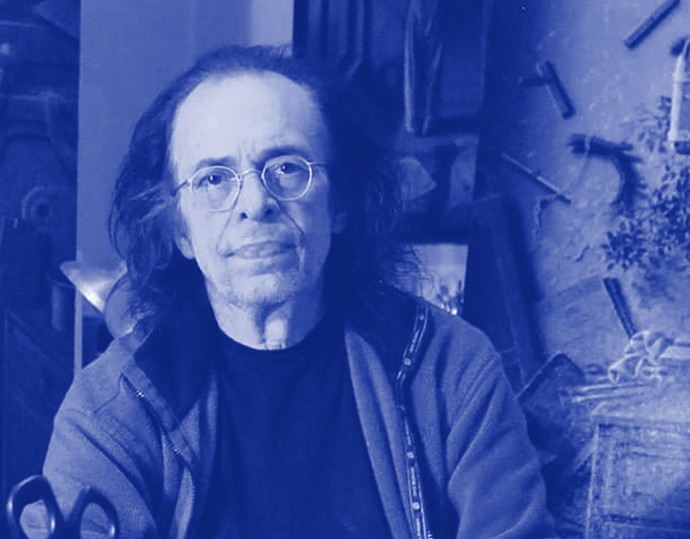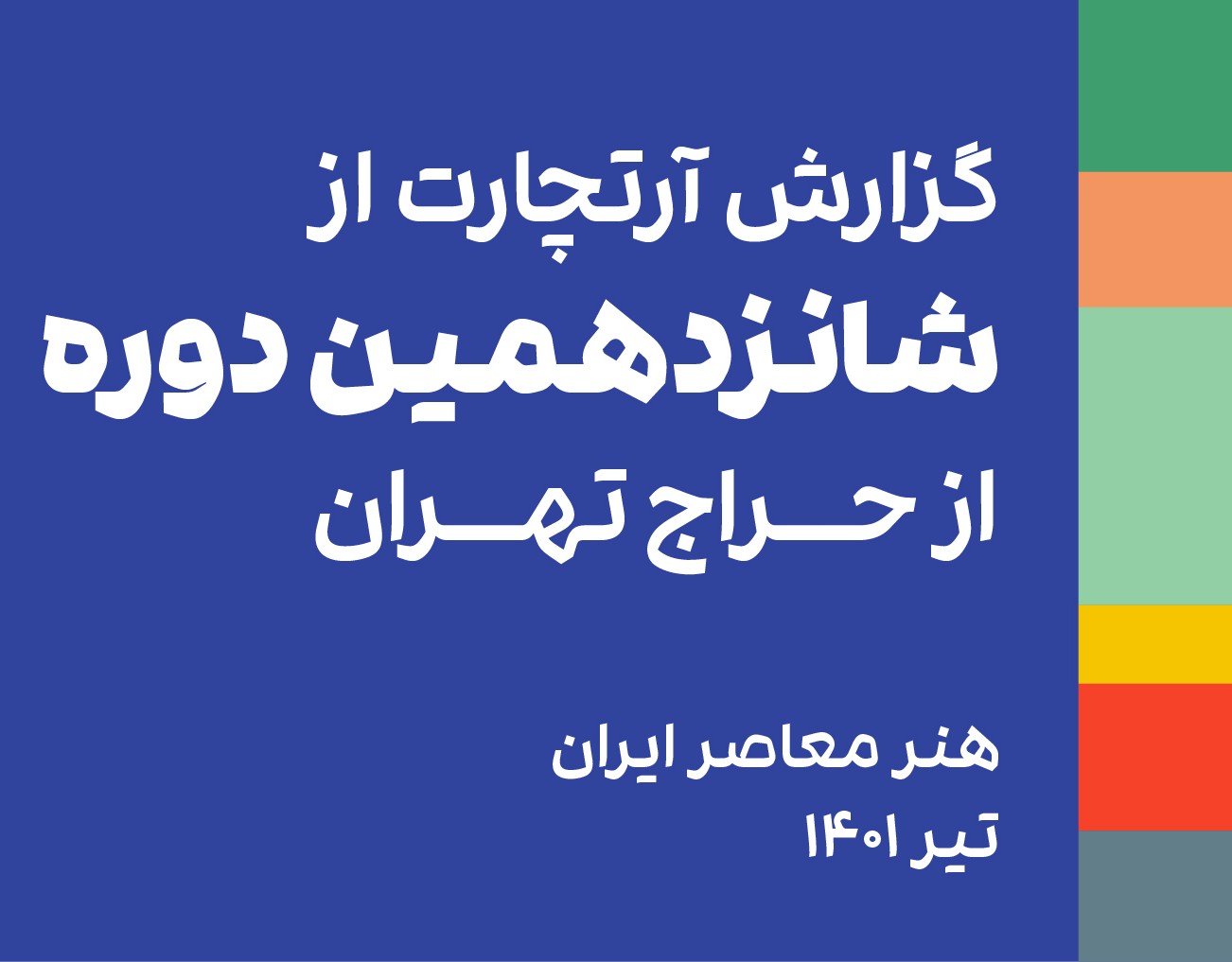About Wahed Khakdan
Wahed Khakdan’s photographic and mysterious paintings have hints of magical realism. As a child, he became accustomed to art through his father, Valiollah Khakdan, one of the pioneers of Iranian stage design. He started his elementary education at the Tehran Academy of Fine Arts. Later in 1968, he entered the School of Decorative Arts and continued his studies in interior architecture. Three years after graduation, he exhibited his artworks in Seyhoun Gallery in his first solo exhibition. Since then, he has exhibited his artworks in Iran, the United States, and Germany many times. Until the early sixties, in parallel with painting in interior architecture and costume design for theater and cinema, he had scattered activities and moved to Germany in 1984. The father's theatrical heritage, the memories of his homeland, and the experience of this migration are deeply connected with his paintings' dramatic nature and narrative nature. Khakdan worked in the abstract in the first period of his work, but after graduating from university, he turned to surrealism. With the arrival of the season of revolution and war, under the influence of the atmosphere of that time, he created artworks with social themes with a realistic approach and allegorical expression. But the nature of the aliens is Khakdan's most famous work, belonging to the period after his migration and residence in Germany. The accumulation of objects, stillness, and limited space are the characteristic features of this period of single paintings. Khakdan focuses on personal stories and adds value to signs and details. This way, it combines the broken pieces of memory in a limited space and puts this collection over time. Khakdan looks at past memories from a nostalgic position; in other words, he thinks of the past through objects. Objects of different periods of his life pile up in his frames, and he pours his lived experiences in a symbolic tone in the form of elements that carry the burden of sorrow and grief. "Suitcases, photo frames, wooden shelves, suits, bedding, newspaper packages, dolls, and many other objects that seem to have been dumped in the corner of the warehouse over the years are remembered."
Relying on photorealistic techniques, color options, and textures, he paints the dust of antiquity on images and creates antique, haloed, and fetishistic objects. Idols have been destroyed and obsolete over time. Still, this destruction itself adds to the halo around each of them and their sanctity, simultaneously making them more desirable and unattainable. However, he does not seek to reconstruct his personal or national history and past. Homeland has become a changing and ambiguous place for Khakdan. Somewhere in Iran and Germany at the same time, past and present, dream and reality. And this intermediate state has penetrated into all the dimensions of his paintings. Mojabi writes about this period of work: "Khakdan, with a realistic payment, stares at the world and narrates that it can not be so real and natural; "Rather, it is a world of reality that is imagined, grows in the imagination, and expresses itself in the artist's memories." And Khakdan himself has the following inference from his work: "Childhood, the passing of time, the eternity of objects and people, places and abandoned objects, and most importantly, playing with the history of art."
The Most Expensive Artwork
At Auctions
First Attendance
24 November 2008
# Attendance
34
# Artworks
45
Average Realized Price
26,544 USD
Average Min Estimate
19,131 USD
Average Max Estimate
26,949 USD
Sell-through Rate
77.778%
Average Growth of Artwork Worth
76.626%
Timeline
Post War & Contemporary Art II auction
31 May
Annual 2025 exhibition
7 March
Garden exhibition
7 March
The 22nd Tehran - Modern, Classic and Traditional Iranian Art auction
14 February
Modern and Contemporary Collector exhibition
7 February
Beyond Imagination exhibition
13 December
Old Art, Modern and Contemporary Art auction
7 December
The Rhetoric of Objects exhibition
6 December
In Memory of Hadi Jamali 1 exhibition
1 November
Timeless Creation exhibition
25 October
Gargas exhibition
23 August
Resize exhibition
16 August
The 20th Tehran- Modern and Contemporary Iranian Art auction
5 July
Attitude exhibition
31 May
A Collection exhibition
10 May
10s of Artworks, 10s of Millions exhibition
8 March
A Glance at Sketching exhibition
8 March
New Year/ New Vision exhibition
23 February
Modern & Contemporary Art auction
2 December
Modern Art auction
27 September
Snow and Stork curated by Behzad Hatam exhibition
25 August
The 17th Tehran Modern and Contemporary Iranian Art auction
18 July
Ancient Art | Modern and Contemporary Art auction
27 May
Art, Jewelry, Luxury Watches and Interior auction
26 November
Tehran- 16th- Iranian contemporary art auction
1 July
Vanishing Point exhibition
6 May
Art of the 20th Century | ONLINE ONLY auction
10 February
Modern and Contemporary Art auction
27 November
The 14th Tehran- Contemporary Iranian Art auction
12 August
The Collection of Liam Gallery exhibition
20 May
Collector 7 exhibition
5 February
Sanctuary exhibition
15 January
The 13th Tehran- Modern and Contemporary Iranian Art auction
15 January
No.8 auction
1 January
One by One exhibition
3 July
DISCOVERIES auction
17 June
دوازدهمین دوره حراج تهران auction
17 January
White Black Gray exhibition
13 December
The limited-edition collection "Silence of Shadows" and "Inheritors of Time" book launch exhibition
15 November
Discoveries auction
5 June
Foad Sharifi Print Makings exhibition
12 April
Up to 10 Million exhibition
8 February
2018 Collection Selling exhibition
17 January
دهمین دوره حراج تهران auction
11 January
Hampel Kunstauktionen - - December 2018 auction
7 December
Solo exhibition of Khakdan unit exhibition
16 November
DISCOVERIES auction
2 June
هشتمین دوره حراج تهران auction
12 January
Realism from yesterday to today exhibition
3 February
The 6th Tehran- Contemporary Iranian Art auction
23 December
Discoveries auction
1 June
Wahed Khakdan exhibition
29 April
Kunst nach 1945/ Zeitgenssische Kunst Teil II auction
12 June
دومین دوره حراج تهران auction
28 May
A Day In Heaven exhibition
9 November
اولین دوره حراج تهران auction
22 May
Kunst nach 1945 / Zeitgenssische Kunst auction
28 April
Moderne und Zeitgenössische Kunst auction
2 December
Moderne auction
12 June
Moderne und Zeitgenssische Kunst auction
4 June
Modern & Contemporary Middle Eastern & South Asian Art auction
12 October
International Modern & Contemporary Art auction
29 April
Modern & Contemporary Arab, Iranian, Indian & Pakistani Art auction
24 November
Articles
The 22nd Tehran Auction Report: The First Auction of Modern, Classic, and Traditional Iranian Art 18 February 2025
The 22nd edition of Tehran Auction, focusing on modern, classic, and traditional Iranian art, was held on the evening of February 15, 2025, at the Parsian Azadi Hotel in Tehran. The auction was conducted by Shahriar Rabbani, an Iranian presenter and actor. In this edition, 85% of the presented artworks (84 out of 99) were sold, generating a total of $2.6 million. A work by Reza Abba...
۱7th Tehran Auction Sales Report 26 July 2023
The 17th Tehran auction: modern and contemporary, was held on Friday July 21st, 2023 at Parsian Azadi Hotel. This auction achieved a total sale of 214 billion tomans equivalent to 4.3 million dollars, which was a growth of 77.8% compared to the previous period. Artchart has observed the 17th Tehran auction in the upcoming report.
Vahed Khakdan's Market Review 25 July 2022
Khakdan unit's photo-like and mysterious paintings have a touch of magical realism. He was the son of Valiullah Khakdan, one of the pioneers of stage design in Iran, and he got used to art from childhood. He started his preliminary art studies at the Tehran Fine Arts Academy and later entered the Decorative Arts Academy in 1968 and continued his studies in the field of interior arch...
Sixteenth Tehran Art Auction Report 3 July 2022
On the evening of Friday, July 1, 2022, the sixteenth edition of the Tehran Auction dedicated to contemporary Iranian art was held at the Parsian Azadi Hotel. At this event, 120 artworks by 117 artists were offered for sale. The auction successfully sold all of the artworks, achieving a total sales figure of 78 billion and 100 million tomans. The average price per piece (by dividing...




